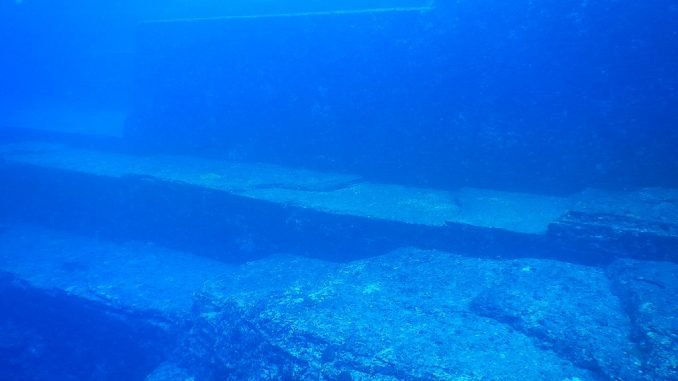
Or at least not many.
In recent days, William Shatner (you know, that actor from the Star Wars TV show back in the 60s) has been feuding with some well-known archaeologists on Twitter. It started with some of them criticizing his position as host of on his History Channel television show, The UnXplained, where he presents a fairly one-sided approach to archaeological topics.
Sarah Parcak (@indyfromspace) tweeted on Apr. 3 that she was asked to be on the show but turned them down. On the same day, Flint Dibble (@FlintDibble) challenged the Shat to a duel.


Shatner then replied with “who knew there was such outrage in the archaeological community on a show on ancient artifacts? From butt hurt types, to school yard bullies to trash collectors.”
Then there was some back and forth on Twitter about whether “butt hurt” is homophobic (I always thought it referred to being spanked on the butt…)
After Shatner claimed the show’s producers didn’t invite her, Parcak showed copies of email of the invites, etc., and eventually she responded with a pretty decent challenge for Shatner: visit Giza with her.
Drama. Twitter style.
On to the Review
So I watched last night’s episode of the intentionally misspelled and apparently fictional series on the History Channel, The UnXplained.
At first, I thought it might be interesting as it opened with a genuinely fascinating and mysterious place: the Challenger Deep.
Unfortunately, the show went left of reality from that point. It didn’t get to pseudoscience right away, though. The narrative seemed bent on highlighting the mysterious nature of the ocean depths and the viewer gets a sense of what’s to come as Shatner brings up “Zealandia,” that undersea landmass that was in the news a few years ago. While the show notes that it subsided over 50 million years ago, so obviously irrelevant to any human civilization, it was a clear device to introduce the notion of “sunken continents” in general. If Zealandia can exist than so can Mu, Lemuria, and Atlantis in spite of their fictional origins—or so the implied logic would have the viewer believe.
Shatner, of course, describes Atlantis with hardly an ounce of skepticism or doubt that it existed. The show cuts away to Hugh Newman who introduces James Churchward’s idea of Mu, a fictional continent that was supposed to exist in the Pacific Ocean from Easter Island to Micronesia. It goes without saying that there is zero geological or archaeological evidence to suggest it was more than Churchward’s story.
Remnants of Mu
That, however, doesn’t stop Shatner from introducing the site of Nan Madol on the island of Pohnpei in Micronesia as a potential “remnant” of this now “lost civilization.” Of course the racist trope of “we can’t figure out how they moved the stones” is suggested by Hugh Newman, backed by Andrew Collins. This, they seem to suppose, is why it must be from the time of Mu (whatever period that is).
Construction at Nan Madol first began at around 1180 CE by removing large, columnar basalt stones from the other side of the island and stacking them a the site which would become a temple or ceremonial center. The earliest human activity on the island of Pohnpei began at about 80-200 CE and Nan Modal ended up being the ceremonial and political center for the Saudeluer Dynasty until the early 17th century CE. This is all information available through archaeological and ethnographical investigations.
None of it was mentioned by the Shat.
The show’s next focus is on the Yonaguni “monument,” a geological formation off the coast of Yonaguni Island, the southwestern-most extent of Japan before reaching Taiwan.
The Yonaguni rock formation is completely natural. Not a single bit of cultural material has been found to indicate otherwise. Not a single bit. None. Nada. Zilch.
The formation is of the same sandstone observed above the surface on the island of Yonaguni itself. And, for the rock formations above the surface, the strike and slip are the same. Not only that, but there are the same patterns of jointing and fracturing present! Yet no one is suggesting that this subaerial geology is evidence for Mu. Shatner’s guest interviews all say the underwater formations “look like” steps and platforms, etc. Never mind that the “steps” are each taller than the average person.
The Shat mentions none of this.
What they do discuss is the point at which the geologic formation was above the surface and part of the subaerial island: 12,000 to 15,000 years ago. This would have been the paleolithic period of Japan, right around the time people were starting to figure out how to make pottery (14,000 BCE) but before agriculture (~4500 BCE). The people of the region just didn’t have the capability in calories or numbers to produce monumental architecture. Nor is there evidence that the formation is anything but geology.
Professor of Oceanic Geoscience, Patrick Nunn (2009) says this about the site:
“The Yonaguni Underwater Pyramid and associated structures found below water off southern Yonaguni continue above, where I have examined them extensively, and there seems no reason to suppose that they are artificial (p. 127).”
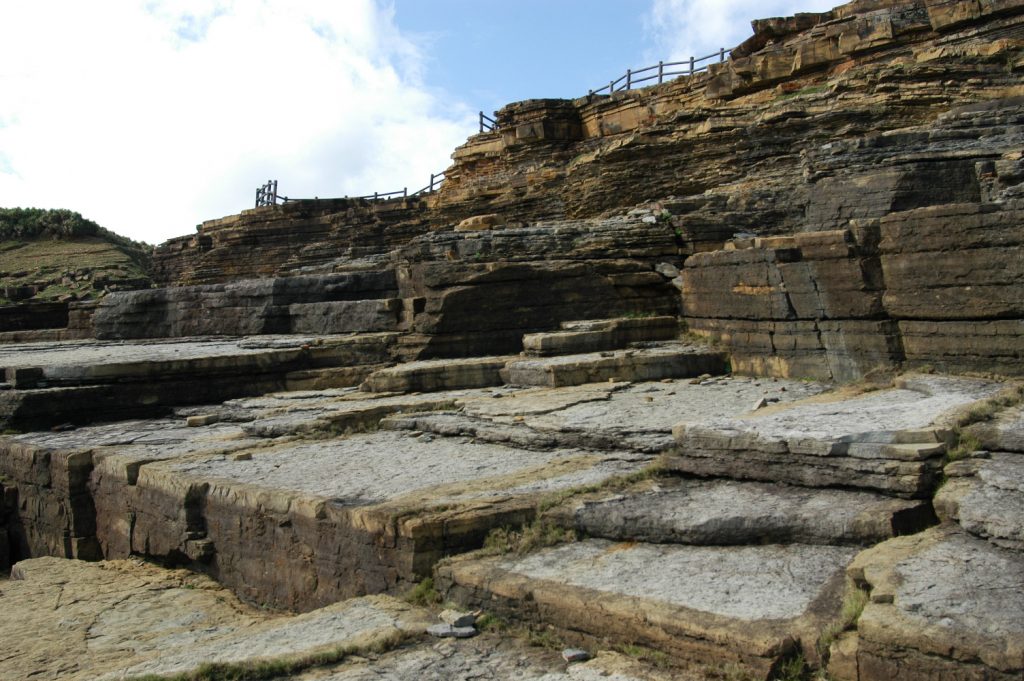
The Shat ignores all this.
In my opinion, the greatest mystery that would have had a much greater appeal, would have been to continue their opening segment on the Challenger Deep! Shatner spent less than 5 of its 40 or so minutes of content on it! Most of the rest is all about pseudoscientific ideas that only self-proclaimed, but eccentric, “researchers” like Newman, Collins, and plagiarist Brien Foerster (yep, he was on the show too) give any credence to.
There is so much fascinating history behind the discovery and investigation of the Challenger Deep that it could easily have been the topic of the entire show. And, it would have demonstrated William Shatner to genuinely care about exploration in the way his Star Trek persona once did.
Yes, I was pulling the reader’s leg and making a bit of fun with the “Star Wars actor” description at first paragraphs above. Those that comment to point out my “error” will also reveal they didn’t read to the end.
Like so much of the History Channel’s content in the last couple decades, The UnXplained is a grand waste of time for anyone that wants to genuinely explore archaeological mysteries and fascinating civilizations of our human past. There are so many places to find audio, visual, and printed media that are well-thought out and factual. The UnXplained isn’t one of them.
Take a look below for some interesting media on the Challenger Deep and deep sea exploration that is far more interesting and factual than Shatner’s myopic view of the topic.
References and Further Reading
Crawford, Gary W. (2011). “Advances in understanding early agriculture in Japan.” Current Anthropology. 52 (4): 331–345.
McCoy, Mark D., et al (2016). “Earliest direct evidence of monument building at the archaeological site of Nan Madol (Pohnpei, Micronesia) identified using 230Th/U coral dating and geochemical sourcing of megalithic architectural stone.” Quaternary Research, 86 (3): 295–303. (())
Nunn, Patrick D. (2009). Vanished Islands and Hidden Continents of the Pacific. Honolulu: University of Hawaii Press
On the Challenger Deep and the History of Deep Sea Exploration:
In Oceans Deep: Courage, Innovation, and Adventure Beneath the Waves
Opening the Great Depths: The Bathyscaph Trieste and Pioneers of Undersea Exploration
Expedition Deep Ocean: The First Descent to the Bottom of All Five Oceans
James Cameron’s Deepsea Challenge
Mariana Trench–David Attenborough’s Documentary on the Deepest Sea Floor
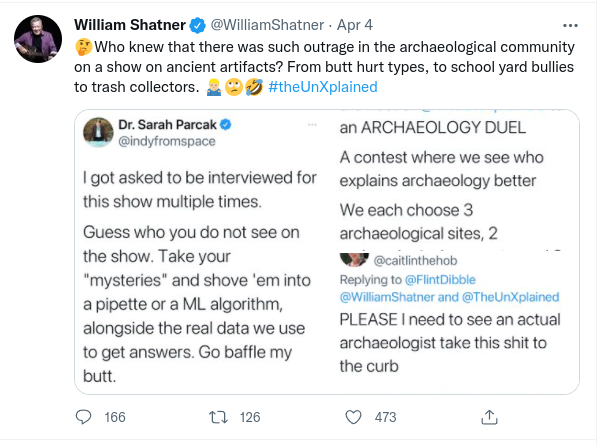
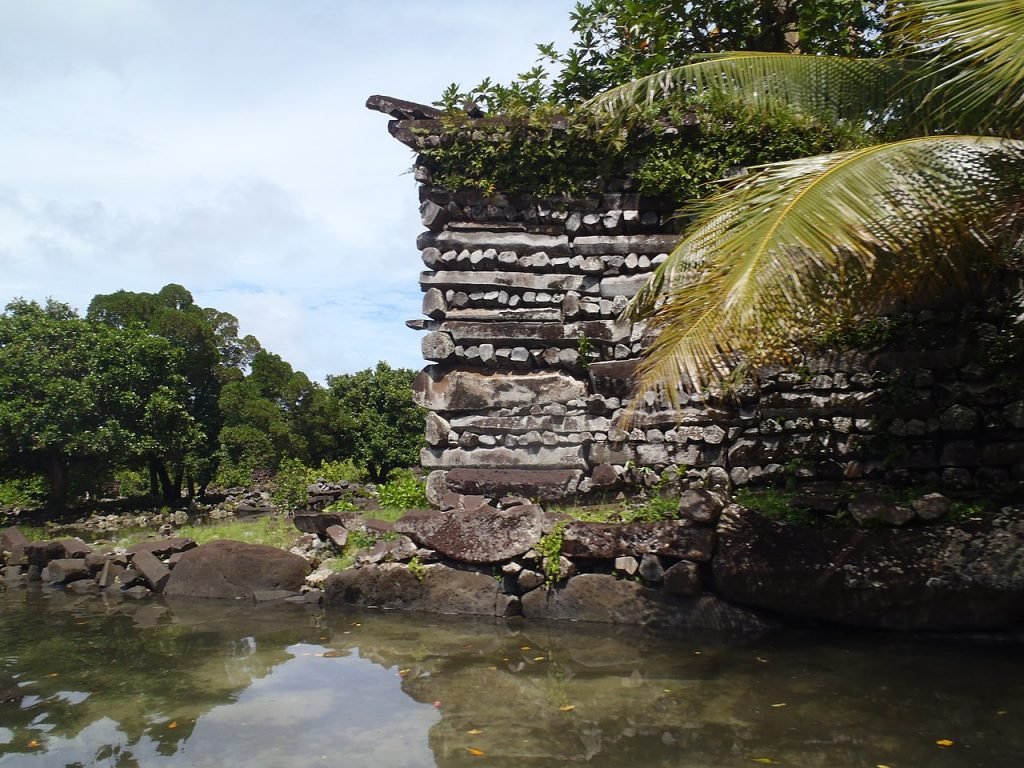
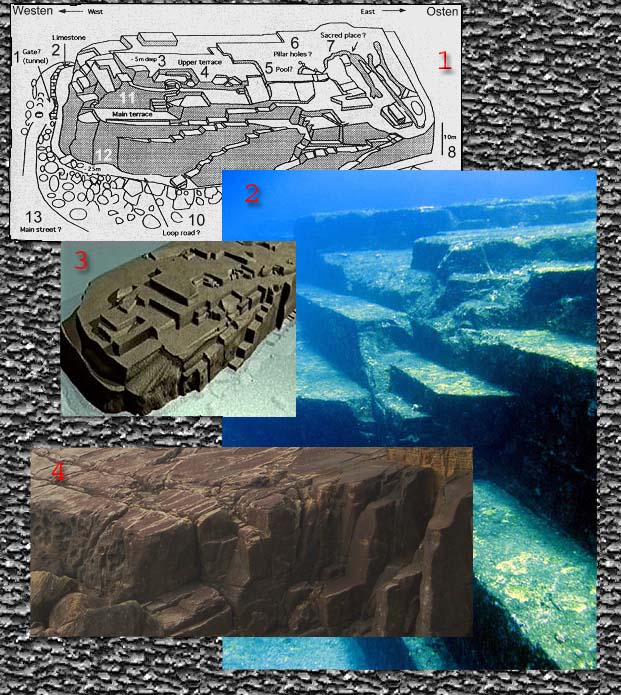
Dammit Jim, you’re an actor, not an archeologist.
LOL. What I’ve noticed in just a few hours is interesting. I posted the link in two different FB locations. One is a page where the audience is predominantly non-archaeologists and the other is a group where there are a lot of archaeologists. In the first, there are a lot of people offended that anyone would criticize Shatner. One even called him a “treasure.” He’s promoting archaeology, they say. In the other, everyone is like, “damn, I hate to see it from this guy.” and that sort of thing.
In the words of Spock: “fascinating.”